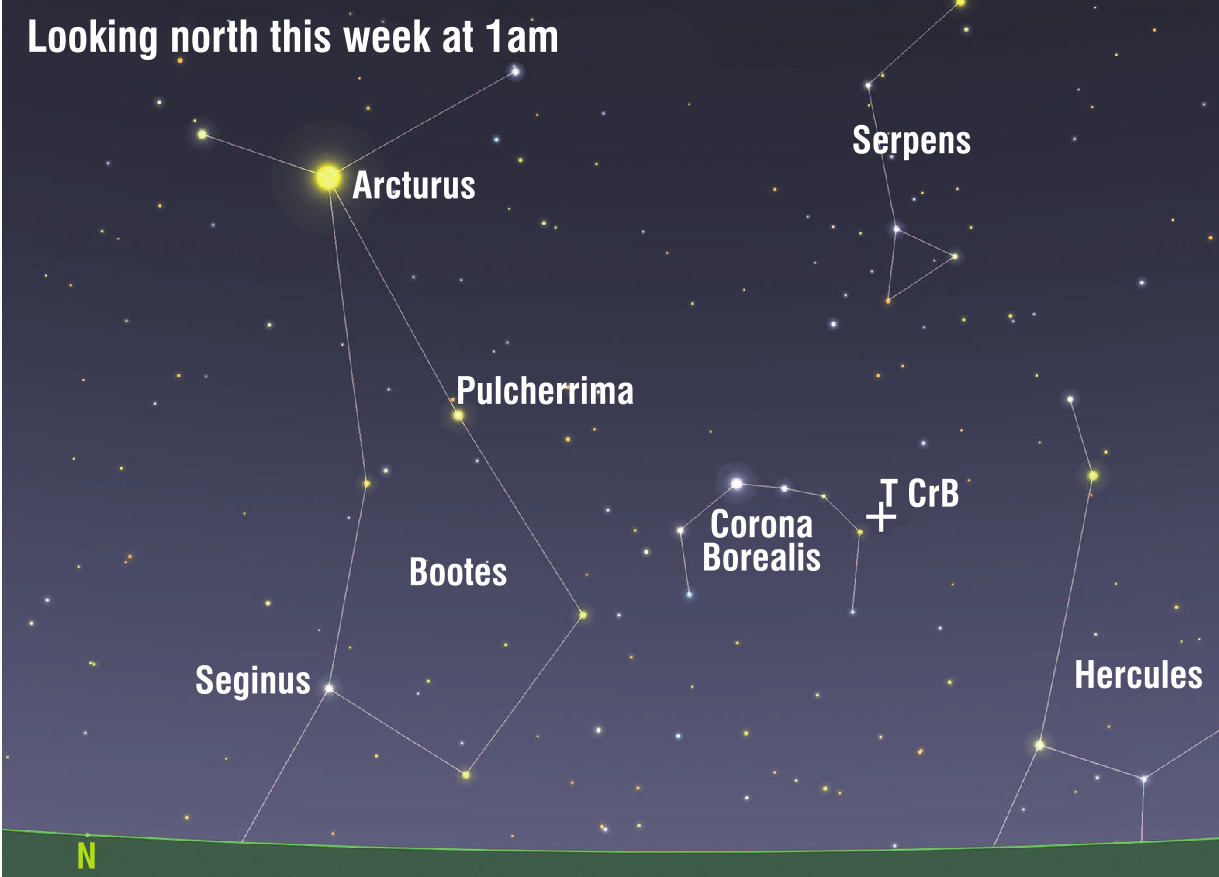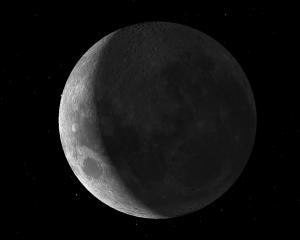
If the sky is clear down to the horizon, below and to the right of Arcturus, you should be able to pick out the distinct semi-circle of seven stars that comprise the constellation Corona Borealis, the Northern Crown. According to legend, Corona Borealis was said to be the crown worn by Princess Ariadne of Crete when she married the god Dionysus. The constellation’s brightest star is sometimes called Gemma, the Latin name for the jewel, a fitting description for this celestial coronet that adds a touch of beauty to our night sky.
From our part of the world, Corona Borealis never climbs exceptionally high; in Dunedin, it gets to just 17 degrees above the horizon. Despite its relatively low altitude, there’s a reason to keep your eye on this constellation for the next few months.

Usually, T CrB is invisible to the naked eye, but roughly once every 80 years, an explosion occurs, which makes the star rapidly increase in luminosity and blaze brilliantly for a few days before sinking back into invisibility.
Astronomers are predicting another explosion because T CrB has previously been observed at least twice: on February 9, 1946, and on May 12, 1866.
Stellar explosions that can be seen with the naked eye are rare. Stellar explosions that can be seen with the naked eye and predicted with some degree of accuracy are rarer still; to date, only five are known in the sky.
So, keep your eyes peeled for the next few months. You may get to witness a once-in-a-lifetime stellar explosion.











